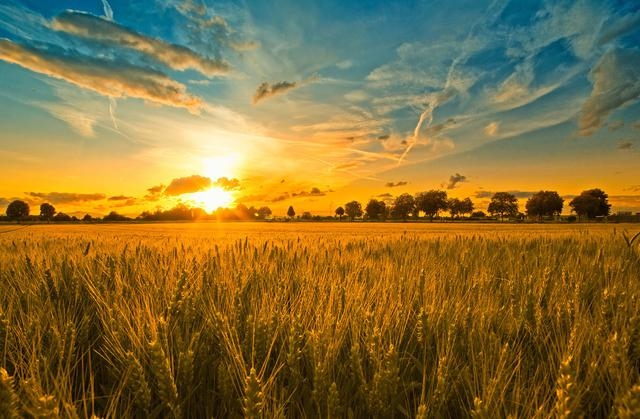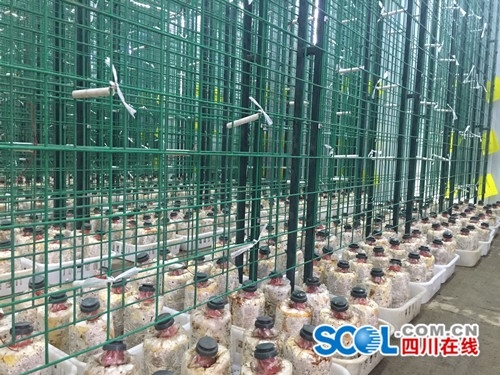Technical opinions on Maize production in 2016
I. Popularization of fine varieties
In view of the different disastrous weather that may be encountered during the growth of spring corn and summer corn, Suyu 20, Suyu 22, Nongle 988, Denghai 11 and so on are recommended, and "Zhongnuo 2" is the main fresh corn. Try to buy carefully coated seeds to prevent the harm of underground pests in the seedling stage.
Second, sowing seeds at the right time according to the stubble
Sowing at the right time should be "early in spring and postponed in summer". It is recommended that the sowing date of spring corn should be advanced to late March to Ching Ming Festival, and the sowing date of summer corn should be postponed to mid-late June to avoid the harm of planthopper to maize seedlings. The germination rate of sweet and waxy corn is relatively low (especially those sown in early spring). It is suggested that the seedling raising methods such as plastic greenhouse, simple arch shed and plastic plate hole should be used in the middle and late March to improve the germination rate. Transplanting, membrane breaking and open-field direct seeding were carried out in the first ten days of April after the daily average temperature was stable at 10 ℃. The latest sowing date of autumn corn is about July 20, and the latest sowing date of fresh corn is the Beginning of Autumn.
Third, reasonably increase the planting density
Drying the seeds for 2-3 days before sowing to improve the emergence rate and uniformity. The sowing rate was controlled at 2.5-3.0 kg / mu, and the increase or decrease should be carried out according to the characteristics of the varieties to ensure that the number of seedlings could reach 2 times of the suitable number of ears. The sowing depth is 3-5 cm, the row spacing of equal row spacing is about 60 cm, the large row spacing of large and small rows is 80-90 cm, and the small row spacing is 30-40 cm. Check and replenish the seedlings in time after emergence and fix the seedlings as soon as possible. Generally 3-leaf period seedlings, 5-leaf stage fixed seedlings. Remove weak seedlings, diseased seedlings and insect seedlings in time, keep strong seedlings, uniform seedlings and uniform seedlings, and improve the uniformity of the population. Under the high fertility level, the density of density-tolerant varieties can be about 5200 plants / mu. The seedlings and weak seedlings were cleared in time at the jointing stage, and the empty stalks were pulled out at the stage of male silking, so as to reach 5000 plants per mu of effective panicle per mu.
IV. Scientific fertilizer operation
In view of the current situation of farmers planting corn base fertilizer and applying compound fertilizer, nitrogen, phosphorus and potassium fertilizer can be applied together. It is necessary to increase the application of micro-fertilizer in production, and increase the application of zinc sulfate by 1kg / mu in zinc-deficient plots. In fertilizer operation, organic fertilizer, phosphate fertilizer, potash fertilizer and micro-fertilizer were used up before jointing of corn (can be used as base fertilizer, seed fertilizer and seedling fertilizer as early as possible). Nitrogen fertilizer should be applied in stages, including light application of seedling fertilizer, heavy application of panicle fertilizer and topdressing grain fertilizer, and nitrogen fertilizer should be applied into the soil to avoid spreading. Base fertilizer: 2000 kg of rotten organic fertilizer, 7.5kg of phosphorus pentoxide and 5.5kg of potash fertilizer are used as base fertilizer per mu. Seedling fertilizer: about 30% of the total nitrogen fertilizer before jointing of corn, together with other fertilizers, ditched deeply along one side of the seedling, 15-20 cm away from the seedling, about 15 cm deep, in order to promote root and seedling. Ear fertilizer: 40%-50% of the total nitrogen was applied in the maize trumpet opening stage (11th to 12th leaves) to promote larger spikes and more grains. Flower and grain fertilizer: in areas with conditions, 10% of the total nitrogen can be applied during flowering to prevent premature senescence and increase grain weight. Anti-lodging and anti-lodging can be achieved by using 1 vitamin 2 / mu 30kg mixed with water and spraying during the period of big loudspeaker mouth to properly lower the height and strong pole to prevent toppling.
V. Integrated prevention and control of diseases, pests and weeds
To weed before sprouting, use atrazine in combination with another herbicide, such as atrazine 150 grams plus 50% promethazine 200 grams, atrazine 150 grams plus 72% tur 100-150 ml, atrazine 150 grams plus 48% Russo 300-350 grams, etc., spray 30-50 kg per mu of water when the soil is moist, to prevent re-spray leakage. As a long-stalk crop, it is difficult to control diseases and insect pests in the later stage of corn. Therefore, it is necessary to control a variety of diseases and insect pests in the middle and later stage of corn at one time, reduce the incidence of diseases and insect pests in the later stage and reduce the occurrence degree of diseases and insect pests. You can use 20% chlorobenzamide suspension 5 muri 10 ml per mu or 22% thiozoite ·high chlorine fluorine microcapsule suspension 15 murine 20 ml + 25% pyrazolyl ester EC 30 ml mixed spray.
VI. Timely and late harvest
The harvest time of corn should be mastered that the milky line of corn grain disappears and the black layer appears after the ear bracts are withered and white, so as to ensure full maturity. Varieties suitable for silage can be harvested at the right time, and straw silage can be used as feed to increase income.
VII. Implement disaster response measures
First, dig a set of ditches in the field, and the internal and external ditches are connected to ensure that drought can be irrigated and waterlogging can be drained. Second, in case of disaster, the corn that loses before the small trumpet mouth should be helped in time, and the soil should be cultivated shallowly to promote the root. Third, if the fertilizer loss is serious after waterlogging, the restoration fertilizer (mainly nitrogen fertilizer) should be applied in time.
- Prev

Fei Zhonghai: supply and demand situation and Price Prospect of Major Agricultural products in 2016
Fei Zhonghai: supply and demand situation and Price Prospect of Major Agricultural products in 2016
- Next

Deyang Lan Shunming returned to his hometown to lead his villagers to grow edible fungi to become rich.
Deyang Lan Shunming returned to his hometown to lead his villagers to grow edible fungi to become rich.
Related
- A course of planting techniques and methods on how to grow carrots
- How to plant the latest tulips?
- Is it better to pick tea in the morning or in the afternoon? When is the best time for tea to be picked? what is the third or fifth tea?
- Launch Yuanxiao Happy combination Haocha + Tea Yuan healthy Taste
- Penghu Tourism "Fireworks 20 Parade with You"
- 2022 West Lake Happiness holds "Digital Revitalization Voucher" and draws iphone13 and laptop.
- Banqiao Fuzhou social houses are designed to change start-up combined with police elimination to create a safe and livable environment
- The convenient measure of "mechanical weeding" in Xinbei has been abused and the Agriculture Bureau has imposed heavy penalties on the illegal land consolidation.
- Changgeng University Joins Hands with Four Memory Factories to Rescue Memory Talent Shortage
- The list of Taiwan's top 100 MVP managers is listed by the Director-General of the Farmers' Association of Sanxia District.

